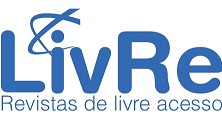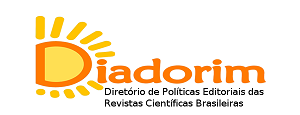ANALYSIS OF AREAS STRONGLY DEGRADED AND SUSCEPTIBLE TO DESERTIFICATION IN CEARÁ AND ITS VIABILITY FOR SOLAR ENERGY GENERATION
DOI:
https://doi.org/10.20873/rtg.v9n19p188-205Keywords:
Semiárido, Desertification, Remote Sensing, Solar Energy, CearáAbstract
Having regard to the negative socio-environmental impacts of the degradation and desertification process in semi-arid regions and the growth of renewable energy at global and regional level, in particular solar energy, The analysis of heavily degraded areas in Ceará can indicate the space necessary for the expansion of solar energy projects providing the rehabilitation of these areas in the state. The utilization of the local potentiality of great solar incidence can occur by the use of the areas that are in vulnerable situation, that is, without plant cover and that are unfit for productive activities such as agriculture. The study aimed to analyze parameters that could detect indications of greater vulnerability in the municipalities of Arneiroz, Canindé and Jaguaribe, through remote sensing when applying the Vegetation Index by Standardized Difference (NDVI) by estimating the Earth Surface Temperature (TST) and by obtaining the declivity of the territories. In the three municipalities, and especially in heavily degraded areas, it was noted the existence of areas with little or no vegetation along with the highest temperatures recorded. And with the analysis of the declivity was determined the feasibility of using the areas for the implementation of enterprises intended for the generation of solar energy.
References
BORGES, E. F.; ANJOS, C. S. dos.; BAPTISTA, G. M. Análise multitemporal da temperatura de superfície no os Este da Bahia. Anais... XV Simpósio Brasileiro de Sensoriamento Remoto. p. 6358-6264. Curitiba-PR, 2011.
BRASIL, 2004. Ministério do Meio Ambiente (MMA). Programa de ação e combate à desertificação e mitigação dos efeitos da seca – PAN-Brasil. Brasília: Edições MMA.
CEARÁ, Secretaria dos Recursos Hídricos, Programa de Ação Estadual de Combate à Desertificação e Mitigação dos Efeitos da Seca, PAE-CE, Fortaleza: Ministério do Meio Ambiente / Secretaria dos Recursos Hídricas, 372p. 2010.
CEARÁ. Instituto de Pesquisa e Estratégia Econômica do Ceará (IPECE). Perfil Municipal Fortaleza, 2014. Disponível em: http://www.ipece.ce.gov.br/publicacoes/perfil_basico/perfil-basico-municipal-2014. Acesso em: 12 mai. 2015.
DIAS, Erika Rodrigues. Geração de Modelo Digital de Elevação utilizando dados do SRTM como subsídio ao planejamento e gestão territorial do município de Lucena (PB). Caderno de Geografia, v. 26, n. 45, p. 151-159, 2016.
EMPRESA BRASILEIRA DE PESQUISA AGROPECUÁRIA – EMBRAPA. Serviço Nacional de Levantamento e Conservação de Solos (Rio de Janeiro, RJ). In: REUNIÃO TÉCNICA DE LEVANTAMENTO DE SOLOS, 10., 1979, Rio de Janeiro. Súmula… Rio de Janeiro, 1979. 83 p. (EMBRAPA-SNLCS. Micelânea, 1).
FUNCEME; CGEE, 2015. Fundação Cearense de Meteorologia e Recursos Hídricos; Centro de Gestão e Estudos Estratégicos. Mapa Áreas fortemente degradadas em processo de desertificação no Ceará - 2015. In: CGEE, 2016. Desertificação, degradação da terra e secas no Brasil. Brasília: Centro de Gestão e Estudos Estratégicos
NASCIMENTO, R. L. Energia solar no Brasil: situação e perspectivas. Câmara dos Deputados, Consultoria Legislativa, n. 55 61, p. 46, 2017. Disponível em: <http://bd.camara.gov.br/bd/bitstream/handle/bdcamara/32259/energia_solar_limp.pdf?sequence=1>, Acesso em 14/11/2019
PEREIRA, E. B; MARTINS, F.R.; ABREU, S. L. de; RÜTHER, R. Atlas Brasileiro de Energia Solar. São José dos Campos: INPE, 2006. 104 pp.
PONZONI, F. J.; SHIMABUKURO, Y. E. Sensoriamento remoto no estudo da vegetação. São José dos Campos: Parêntese, 2009. 127 p. il
UNCCD, Convención de las Naciones Unidas de Lucha contra la Desertificación, 2007. Disponível em: <https://www.unccd.int/sites/default/files/relevant-links/2017-01/16add1spa.pdf >. Acesso em 13 Nov. 2019.
KONZEN, G. Solar. In: TOLMASQUIM, Mauricio Tiomno. Energia Renovável: hidráulica, biomassa, eólica, solar, oceânica. Rio de Janeiro: Empresa de Pesquisa Energética (2016). p.310–408.
KUINCHTNER, A.; TREVISAN, R. F. ; CAMPONOGARA, I. . Adequação do Uso e Ocupação do Solo Urbano em Função da Declividade de Vertentes em Santa Maria/RS. In: V Simpósio Nacional de Geomorfologia I Encontro Sul-Americano, 2004, Santa Maria/RS. Adequação do uso e ocupação do Solo Urbano em Função da declividade de vertentes, em santa Maria/RS, 2004.
Downloads
Published
How to Cite
Issue
Section
License
Revista Tocantinense de Geografia does not remunerate any author for the publication of their texts. The contents of the texts published in this journal are the responsibility of the authors.








.png)












